

ASTEROID I N STI TUT E
A PROGRAM OF B612

Cover: Clouds at sunset, by Ed Lu from the ISS
This page: An atoll in the South Pacific, by Ed Lu from the ISS

WE HAVE A NEW LOOK!
Launched in 2017, the Asteroid Institute is a program of B612 and is designed to be the international center of excellence for scientific collaboration on the discovery and deflection of asteroids as well as an incubator for new technologies. This report outlines progress on science and research within the Asteroid Institute and other public education programs at B612.
LETTER FROM THE PRESIDENT

This year we celebrated several important anniversaries. First, in March, the world came together to celebrate the 50th anniversary of the Apollo missions. B612 co-founder Rusty Schweickart’s Apollo 9 mission in March of 1969 was critical for the success of the subsequent July 1969 Apollo 11 moon landing. His Apollo experience ultimately gave birth to a commitment to this planet. His visionary thinking has helped shape our organization and has allowed both B612 and Asteroid Day to grow and evolve. You can read more about Rusty’s perspective on page 18 of this report.
Perhaps one of the things I am most excited to see is the growth of capability in the field we occupy. Last summer with asteroid 2018 LA, we saw our planet’s asteroid tracking and early warning system work together. Because of new alert systems in place, astronomers were able to assess the object shortly after discovery and determine its trajectory (it exploded over Botswana). However, this summer, another asteroid, asteroid 2019 OK, whizzed past Earth, having been detected only earlier that week, which surprised all of us as to its size and close proximity to our home planet. While our systems are improving, we still see an imperative for an increase in discovery rates. This will be possible only through increases in funding for technologies to find and track asteroids.
This year, on June 30th, we celebrated the 5th anniversary of Asteroid Day. B612 is a founding sponsor of Asteroid Day, whose primary goal is to inspire the world’s citizens to learn more about asteroids—their role in the formation of our solar system, how we can use their resources, how asteroids can pave the way for future exploration, and, finally, how we can protect our planet from asteroid impacts.
Since its founding in 2014, Asteroid Day has quickly grown into a global movement and is now recognized by the United Nations as “the international day of awareness and education about asteroids.” Asteroid Day, combined with B612’s other education and advocacy efforts, has contributed to a strong shift in public pressure and discourse around planetary defense.
In addition to our public education programs, Dr. Sarah Greenstreet, Senior Researcher at the Asteroid Institute, completed her research paper entitled “Required Deflection Impulses as a Function of Time Before Impact for Earth-Impacting Asteroids,” which should be published in late 2019 or early 2020. This paper describes her research using the Asteroid Decision Analysis and Mapping (ADAM) platform. You can read more about what we learned from Sarah’s research on page 10. As ADAM’s capabilities are growing, we continue to focus our fundraising around the project. This year, we launched a funding campaign to secure multi-year support for several dedicated full-time technical team members to continue to build and expand ADAM. And we continue to support other science and technology programs such as the LSST Solar System Science Collaboration, University of Washington DIRAC Institute, and the San Diego Air & Space Museum through our grantmaking activities.
In addition to our growing programs, we also welcomed Lawrence Wilkinson as a new board member. Lawrence has served on the boards of Oxygen Media, Common Sense Media, Wired Ventures, Pacific News Service, and The Institute for the Future, among others. He is an avid lover of all kinds of maps.
We hope you enjoy reading about our progress and what’s possible when we work together to build shared understanding, computation tools, and partnerships.
Looking ahead,

Danica Remy President, B612 Foundation Co-Founder, Asteroid Day
ABOUT US
B612 is dedicated to protecting Earth from asteroid impacts. We do this through:
ASTEROID I N STI TUTE
Driving forward science and technologies needed to protect Earth from asteroid impacts through the Asteroid Institute.
Educating the public, the scientific community, and world governments about asteroids through programs such as Asteroid Day.
Since the organization’s inception in 2002, our work has been carried out entirely through the support of private donors.
What started in 2002 as a visionary idea to develop the technology to deflect an asteroid has grown into a world-renowned organization and scientific institute with a key role in the emerging field of planetary defense. For years, B612, our partners, and a global community of dedicated scientists and researchers have advocated for increased asteroid detection, and many victories have resulted from those efforts. Asteroid detection is now debated seriously in scientific, governmental, and public conversations.
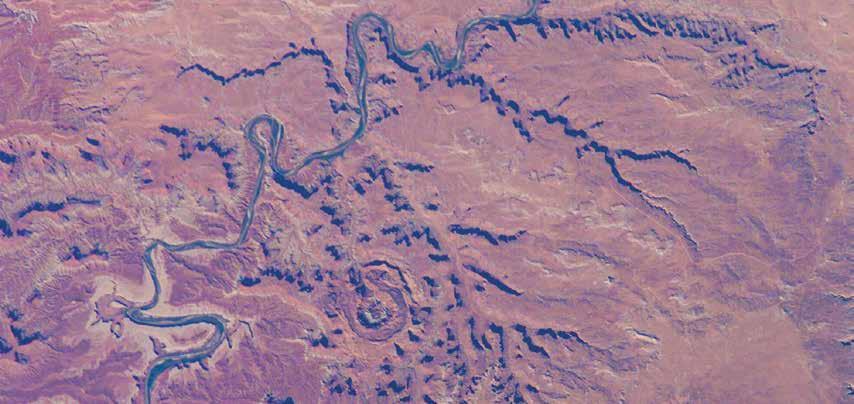
Upheaval Dome and the Green River, Canyonlands National Park, by Ed Lu from the ISS
IN THE LAST YEAR
Research Presented at the National Academy of Sciences
Harold Reitsema, our Mission Director at the Asteroid Institute, presented at the National Academy of Sciences on the work B612 has done on space-based asteroid observation missions. Dr. Reitsema presented B612’s research on what a constellation of satellites could achieve as well as the knowledge learned during the planning stages of the now-canceled Sentinel Mission.
Research Presented at the Planetary Defense Conference
The findings of the Asteroid Institute’s Dr. Sarah Greenstreet’s research, “The Effect of Warning Time on the Deflection of Earth-Impacting Asteroids,” was presented at the Planetary Defense Conference in College Park, Maryland. The work was expanded into a paper for publication in a scientific journal, which is expected to be published in late 2019 or early 2020.
B612 Sponsors the LSST Solar System Readiness Sprint
Right on the heels of the love relationship we have with Earth is a responsibility.
RUSTY SCHWEICKART
For the second consecutive year, B612 sponsored the LSST Solar System Readiness Sprint, a convening of scientists ensuring the readiness of the scientific community to interpret LSST’s solar system data when it begins operation. One of the largest telescopes on Earth, the Large Synoptic Survey Telescope (LSST), will come online in 2022. It is expected to catalog millions of asteroids, including over 100,000 near-Earth objects. In order to be ready for this data, the scientific community is collaborating, collecting resources, and building analytical tools, including the Asteroid Institute’s ADAM project.
This cloud represents the approximately three million near-Earth asteroids larger than 25 meters that need to be found. The orange dot represents the 20,614, or less than .01%, that have currently been found. In 2018, 1,839 new near-Earth asteroids were found.
ASTEROID I N STI TUTE
LETTER FROM THE EXECUTIVE DIRECTOR
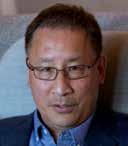
This year the Asteroid Institute continued to advance the science and technologies to discover, track, and calculate the trajectories of asteroids. The good news is that observatories around the world today have continued their successes at finding and tracking larger asteroids. And soon to be deployed mega-telescopes funded by government and academic syndicates promise to make a substantial contribution to the tracked population of smaller near-Earth asteroids down to about 140 meters in diameter. However, tracking the several million much harder to see smaller asteroids under 140 meters in diameter will require different techniques and technologies.
The principal project of the Asteroid Institute is ADAM, the Asteroid Decision Analysis and Mapping platform. ADAM is a platform for mapping, modeling, and analyzing asteroid observations and will form the basis for building future services such as mission planning, asteroid risk visualization, space navigation, and resource mapping. Such services will be important to a future space-based economy, for scientific studies, and for protecting Earth from asteroid impacts. ADAM’s orbit propagation and astrodynamics algorithms are hosted on the Google’s Cloud Services Platform, which enables large-scale parallel computations. Some exciting things from our work on ADAM are outlined in more detail on pages 10 and 11 of this report.
We are also pleased to share that we have secured funding from several new sources to support the expansion of our ADAM development team.
Projects such as ADAM support the Asteroid Institute’s vision of developing a dynamic map of the inner solar system. This map, which is powered by world-class research partners and a global community of donors, will not only protect the planet from asteroid impacts, but it will also support efforts to open new frontiers and, potentially, form a foundation for expansion of humanity into the solar system.
To our future,

Dr. Ed Lu
Executive Director, Asteroid Institute
NEAR-EARTH ASTEROID INVENTORY
[MORE THAN 5 MILLION]
Chelyabinsk, 2013
19 m (62 ft)
30 A-bombs equivalent
0.2% currently tracked of approx. 5 million
City Killer Tunguska, 1908
45 m (148 ft)
400 A-bombs equivalent
3% currently tracked of approx. 500,000
DIAMETER OF ASTEROID (METERS) NUMBER
Civilization Ender
1,000 m (3,281 ft)
150,000 A-bombs equivalent 94% currently tracked of approx. 1,000
NASA Goal
140 m (459 ft)
Regional or Small State
7,000 A-bombs equivalent
33% currently tracked of approx 25,000
This graph shows the number of near-Earth asteroids (NEAs) larger than a given size. You can see from the boxes that nearly all near-Earth asteroids larger than one kilometer have been tracked, but the vast majority of smaller asteroids remain to be tracked. A-bomb equivalent is a measure of the explosive energy released, not radioactive by-products.
*Underlying data set for this visualization from Alan Harris.
ASTEROID I N STI TUTE
UND ERSTANDING WHAT IT TAKES TO DIVERT ASTERO IDS
By Dr. Ed Lu
Depending when we act upon it, how hard is it to move an asteroid? Are there big variations in deflection difficulty? How will this research help us protect Earth from asteroid impacts?
Asteroid Institute Senior Researcher Dr. Sarah Greenstreet was the lead author on a recently submitted research paper entitled “Required Deflection Impulses as a Function of Time Before Impact for Earth-Impacting Asteroids,” with contributors Mike Loucks, John Carrico, Tatiana Kichkaylo, Mario Juric, and myself. This paper examines the range of difficulty (technically, the magnitude of the imparted change in velocity) for deflecting asteroids depending upon how long prior to impact action is taken. We find that there is a considerable spread in difficulty to deflect asteroids, with some requiring an order of magnitude more or less deflection impulse than the median. We identified the easy cases as being primarily asteroids with more highly sensitive trajectories due to their being affected by an earlier close approach to a planet. Unfortunately, the easiest to deflect asteroids are also the ones that are most difficult to identify as being on an impact trajectory. The more difficult cases, on the other hand, were primarily due to asteroids being on an overtaking trajectory with Earth (or vice versa), much like a rear-end car collision on a highway. From a scientific standpoint, what was significant about this work is that we were able to quantify the actual distributions of deflection difficulty as a function of time prior to impact.
The practical application of this work is that it helps us better understand the planetary defense requirements for both asteroid tracking as well as asteroid deflection. Knowing the types of orbits that are most difficult to deflect will help us design telescope observing strategies for finding those impacting asteroids earlier in order to be able to deflect them with less difficulty. Conversely, knowing the types of orbits that are the most difficult to identify as threats will also help us design observing strategies to focus more attention on these asteroids. And by better understanding the range of deflection scenarios we are likely to face, we will also better understand not only how much we need to alter asteroid trajectories in order to deflect them, but how
long ahead of time we must take action. These results will help us understand the requirements for real-life spacecraft designs to deflect asteroids. Over the next few years, this work will be especially relevant as asteroid deflection tests are carried out.
For instance, the upcoming NASA Double Asteroid Redirection Test (DART) mission will be launched in July 2021 to test a kinetic impact asteroid deflection by running into a small asteroid and measuring the resultant change in trajectory. For the first time, humanity will change the orbit of a celestial body! You can follow updates on this exciting mission at the DART homepage. One big unknown in this mission is how much asteroid material will be thrown off in the collision with the DART spacecraft, which affects how much impulse is transmitted to the asteroid. A principal goal of the DART mission and a proposed ESA follow-on mission called HERA is to measure this effect. Once we better understand the real-world effectiveness of kinetic impactors and other asteroid deflection mechanisms, we will be able to use this knowledge together with our understanding of required deflection impulses from Dr. Greenstreet’s paper to better plan for and execute an actual asteroid deflection (which we know we will someday face).
To carry out the work on the Greenstreet et al. paper required the simulation of the trajectories of ten thousand theoretical (or virtual) asteroids whose orbits were chosen to match the distribution of actual Earth-impacting asteroids, which required us to build a very fast asteroid orbit propagator. A propagator allows us to calculate the future location of an asteroid based on its initial location and velocity, taking into account the gravity fields of the Sun and planets, as well as other much smaller effects, including the gravity of other asteroids, the non-sphericity of the Sun and planets, and even corrections due to the curvature of space-time from Einstein’s General Theory of Relativity! The computational infrastructure we built for this research paper will also become a key building block of the Asteroid Decision and Mapping (ADAM) project.
The ADAM project is made possible through the support of a community of donors around the world including the William K. Bowes Jr. Foundation, Steve Jurvetson, Tito’s Handmade Vodka, and three anonymous major donors, in addition to donors from 46 countries.
ASTEROID I N STI TUTE
IMPACT PROBABILITY & THE SPIRIT OF OPENNESS
By Professor Mario Juric and Joachim Moeyens
The Large Synoptic Survey Telescope (LSST), due to enter operation in 2022, will conduct the largest census of bodies in the solar system, including the population of nearby potentially hazardous asteroids. The members of our team located at the DIRAC Institute at the University of Washington—the center of solar system software efforts for LSST—are working to understand how objects on a collision course with Earth would be discovered by LSST. If the LSST finds such an object, would we immediately know it’s heading toward a collision? If not, when would we know? At what point does the probability of impact turn into certainty? When that happens, will there be enough time to react? Or should we deploy other telescopes to proactively follow up potentially dangerous discoveries?
Ninety-nine out of one hundred asteroids arrive unannounced. The way forward on this is not to rely on hope as your strategy. We can do something about it and we should.
ED LU
To answer these questions, our team is developing a simulation framework that makes use of the ADAM platform to create tens of thousands of simulations of how the LSST would observe an asteroid on a collision course with Earth. Each studied case faithfully simulates how the discovery and the recognition of an impending impact would unfold. We look at when the object would first be discovered and whether the preliminary orbit indicates it is dangerous. The system then observes how such an asteroid’s impact probability changes (grows) as more and more observations are added. And, finally, we assess the thresholds of when the probability indicates targeted follow-up (and, ultimately, mitigation action) is needed.
The results of this study will be published next year. They will give the community a roadmap on how to follow up and react to potential impactors discovered with the LSST. And in the spirit of B612’s commitment to openness, the frameworks and analysis software we have built in the process will be made available for everyone to verify and use.

A volcano in the Pacific Northwest, by Ed Lu from the ISS
PROGRAM EVOLUTION
2002
B612 founded with the goal of significantly altering the orbit of an asteroid in a controlled manner.
2004–2008
B612 leads the Apophis debate.
2005
B612 announces the invention of the gravity tractor in Nature
2008–2009
B612 funds design study at JPL showing feasibility of the gravity tractor.
2012–2013
B612 announces the Sentinel Space Telescope project.
Sentinel project passes its first major technical review.
2014
B612 releases asteroid impact video with data from the Nuclear Test Ban Treaty Organization.
B612 is Founding Sponsor of the Asteroid Day project, a global asteroid-awareness campaign.
2015
B612’s “Sentinel to Find 500,000 Near-Earth Asteroids,” published in IEEE Spectrum
B612 hosts Bay Area Asteroid Day event with California Academy of Sciences.
Asteroid Day project holds 150 events worldwide.
B612 funds Caltech research study to validate synthetic tracking feasibility.
2005
Congress gives NASA the goal of finding 90 percent of asteroids larger than 140 meters, called the George E. Brown Jr. Act.
2006
United Nations ASE NEO Committee initiated.
GRAVITY TRACTOR
2012–2013
Open letter sent to NASA about deflection mission planning and discussions regarding potential impact of asteroid 2011 AG5.
A 19 m meteor exploded over Chelyabinsk, Russia, injuring over 1,500 people and damaging thousands of buildings across six cities.
COMMITTEE
UN Committee on Peaceful Uses of Outer Space and General Assembly pass resolution creating International Asteroid Warning Network.
Construction project for Large Synoptic Survey Telescope (LSST) begins.
2016
Asteroid Day is recognized by the United Nations and holds 500 events worldwide.
B612 begins Asteroid Decision Analysis and Mapping project (ADAM) to improve the ability to make decisions on potential asteroid threats.
B612 endorses NEOCam and LSST for 100 m+ solution and stops fundraising for Sentinel project.
2017
B612 launches the Asteroid Institute program, a virtual organization comprised of planetary scientists and engineers around the world.
Asteroid Institute builds team for ADAM to provide analytical tools for asteroid defense scenarios.
B612 publishes call for shared solar system map in Financial Times
B612 Foundation celebrates 15th anniversary.
2018
Asteroid Institute announces Google and AGI as ADAM technology partners.
Asteroid Institute announces appointment of Senior Research Fellows.
On Asteroid Day, 2,000+ events held worldwide, 48hour live asteroid broadcast, and United Nations OOSA publishes Planetary Defence Report.
Asteroid Institute publishes synthetic tracking results as a NASA technical report.
2019
Final report on Sentinel’s infrared technology research and synthetic tracking shared with the National Academy of Sciences.
Asteroid Institute research on deflection impulses to move asteroids presented at Planetary Defense Conference.
Asteroid Day celebrates 5th anniversary and streams 21day global broadcast about asteroids.
ADAM Engineer Funding campaign launched.
NASA announces Planetary Defense Coordination Office.
SYNTHETIC TRACKING
ASTEROID DAY
ASTEROID DISCOVERY ANALYSIS AND MAPPING (ADAM)
Asteroid Day project moves to Luxembourg and holds a 24-hour live asteroids broadcast. 1,200 events are held worldwide.
Asteroid Impact and Deflection Assessment (AIDA) almost funded by EU and USA.
Pew Research poll shows Americans believe asteroid monitoring should be national priority.
Double Asteroid Redirection Test (DART) fully funded for 2022 impact.
The Hayabusa2 spacecraft surveyed the asteroid Ryugu. The Japanese mission will return samples of Ryugu from above and below the surface.
Associated Press research shows Americans believe asteroid monitoring should be a national priority.
ASTEROID I N STI TUTE
RESEARCHERS & COLLABORATORS
Hank Grabowski, Software and Aerospace Engineer
Virginia Tech, BS and MS in Aerospace, Aeronautical, and Astronautical Engineering

Hank is a co-founder of ADS, a leading aerospace engineering, software development, and space situational awareness company and served as the company’s Chief Technology Officer. ADS was acquired by L3Harris in 2018. Hank currently serves as an open-source software and decentralized web advocate and independent consultant. His ADAM contributions focus on implementing the opensource astrodynamics computation components and integration with analysis and visualization tools.
Dr. Sarah Greenstreet, Senior Researcher
University of British Columbia, MS and PhD in Astronomy
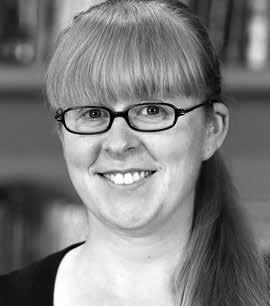
Dr. Greenstreet’s research interests include near-Earth asteroid orbital dynamics, main-belt asteroid resonances, co-orbital solar system objects, impact and crater formation rates, resonant mechanisms that create retrograde asteroids, and near-Earth object population modeling. Her work with the ADAM platform includes studying the change in velocity that must be imparted to an impacting asteroid in order to deflect it from Earth.
Lowell Hanson, Astrodynamicist
Colorado State University, MS Systems Engineering (in progress)
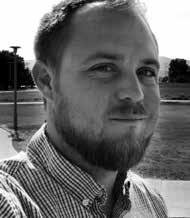
Lowell completed his BS in Aerospace Physics at Metropolitan State University of Denver in 2019. He is now pursuing an MS in Systems Engineering at Colorado State University and also working as a research assistant at CSU’s Energy Institute. His ADAM contributions focus on developing end-user software to interact with ADAM.
Dr. Mario Juric, Associate Professor of Astronomy, University of Washington Princeton University, PhD in Astrophysics

Professor Juric holds the Washington Research Foundation Data Science Term Chair. He is a Senior Fellow at the university’s eScience Institute, dedicated to advancing research in big data. Professor Juric is also the Solar System Data Processing Lead for the Large Synoptic Survey Telescope (LSST), the largest astronomical survey ever to be undertaken. His ADAM contributions focus on applying and extending ADAM to large, LSST-scale asteroid discovery problems.
Joachim Moeyens, University of Washington Postdoctoral Researcher
University of Washington, BS and MS in Physics and Astronomy, PhD (in progress)

Moeyens is interested in big data and software-driven solutions to problems in astronomy. He is now working on algorithms to discover minor planets in astronomical surveys, in particular, on the LSST’s Moving Object Pipeline System (MOPS) and on a novel algorithm named Trackletless Heliocentric Orbit Recovery (THOR). His ADAM contributions focus on simulating LSST discoveries of synthetic impactor asteroids and understanding how their impact probability evolves over time.
Allan Posner, Systems Engineer and Astrodynamicist
Johns Hopkins University, MS in Computer Science, BA and MA in Physics
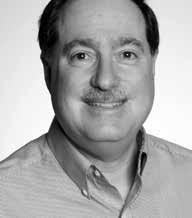
Allan has played integral roles in NASA and DoD programs. For NASA’s Near Earth Asteroid Rendezvous (NEAR), he designed and performed in-flight trajectory-correction maneuvers and led in-flight operations of the magnetometer and the multi-spectral-imaging camera. His ADAM contributions focus on analyzing potential PHA-collision scenarios and creating use cases for subsequent predictions and analyses.
COSMIC BIRTH, EVOLUTION, AND OUR SHARED RESPONSIBILITY FOR THE FUTURE
Retrospective by Rusty Schweickart
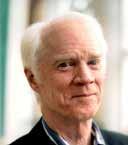
Why do we celebrate the 50th anniversary of anything? The “thing” was the big deal, right? So then it must be to remind us of what that thing 50 years ago was and why it is now still worthy of thinking about and celebrating. Was Apollo 9 that big a deal? Well, it’s certainly a big deal in that it was the mission that I flew on! In and of itself, however, Apollo 9 was just one essential step of many in the Apollo program. It didn’t even go to the Moon! So what’s the big deal?
For me, it’s not any one flight. The big enough deal, for me, is to reflect on Apollo having been a collective decision, 50 years ago, to send out from Earth a small cohort of humans to another world. From that barren, desolate, colorless world, we humans (for we all went) looked back at Earth, the home of all the life that we know of, and realized in a personal way that we both love Earth (Mom) and are beginning a historic voyage into the larger cosmos. That is a big deal.
I choose to view this as cosmic birth. More pragmatic people might reflect on it as Kennedy’s response to the Soviet geopolitical challenge. Or perhaps as the inevitable consequence of advances in rocket technology needed to deliver nuclear weapons. To me those, and other real and logical reasons, pale in comparison with the evolutionary mandate for life to grow and survive. And for Earth life, this mandate translates into reaching out beyond the planet into the cosmos. We’ve now peeked out beyond the birth canal as far as the Moon, but we have no more of a clue than a baby does of what life will hold. What we do know now is that we really love our Mom and that we are just beginning an amazing journey!
The Apollo 8 guys “got this” as they watched, almost in shock, the beautiful blue and white Earthrise over the grey, cratered, lunar horizon. Archibald MacLeish “got it” when he wrote about the crew half way to the Moon, looking back at Earth “… What came to their minds was the life on that little, lonely, floating planet; that tiny raft in the enormous, empty night. ‘Is it inhabited?’”
We went to the Moon as Americans; we’ll go to Mars and further as people from Earth. I started the Association of Space Explorers at the height of the Cold War because I knew that it was far more important that we few astronauts and cosmonauts who had seen Earth with our own eyes from space get together to celebrate our commonality
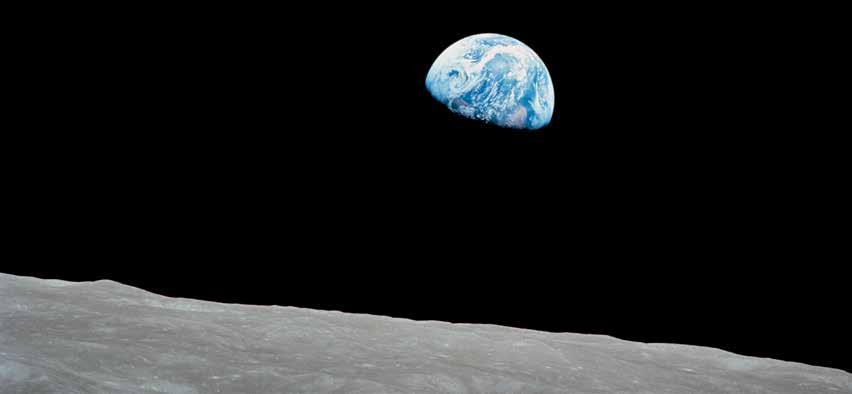
and love for the planet than to remain separate in our national tribes. Today, over 400 men and women from 38 countries, each of whom has flown in space, are members of the ASE. We fly together on the International Space Station. We are well aware of the issues and tensions between and among our home nations. But we sense a larger future.
We’ve worked in laboratories and in the UN to develop the technology and geopolitical systems to protect Earth from devastating asteroid impacts. We are on an evolutionary process of living off this planet in the future. We can no longer burden Earth, and we are a biological species which will expand. We will grow, go beyond, and extend.
We started Asteroid Day with a recognition that we will one day be a multi-planet species. But before that, we need to first deal with the existential threat of asteroid impacts in order to give us the time to become the multi-planet species we will eventually evolve into. We have the intelligence and the power to ensure the survival of life on Earth. It is up to us.
We know technically how to protect Earth, but the big challenge in ensuring we don’t succumb to this existential threat is geopolitical. The decision to deflect an asteroid is a planetary decision. This is a decision in which time is of the essence. We started Asteroid Day to begin the process of understanding this existential threat so that when it actually manifests, we can respond to it collectively.
So, for me, this is the big deal worthy of celebration 50 years after we first landed on the Moon. Landed on the Moon … and looked back at Earth! What we saw was a fantastic reality: the unbelievably beautiful home of all the life in our little corner of the universe. What we realized was our responsibility for doing whatever we can to extend and continue this amazing evolutionary experiment we call life.
Earthrise by Bill Anders, Apollo 8 and B612 Founding Circle member


ASTEROID EDUCAT ION
ASTEROID DAY GLOBAL
This year marks the 5th anniversary of Asteroid Day, a UN-recognized day of public awareness modeled after Earth Day. Since Asteroid Day launched, it has delivered six billion impressions globally in print and broadcast and has enabled thousands of independently organized events around the world. Asteroid Day started with a global call to action titled “The 100X Declaration.” The 100X Declaration received international attention, garnering a global cross section of signatures from B612 supporters, scientists, astronauts, global business leaders, celebrities, and notables.

The 100X Declaration calls on the world to: (1) Employ available technology to detect and track near-Earth asteroids via governments and private and philanthropic organizations; (2) advance a rapid hundredfold acceleration of the discovery and tracking of near-Earth asteroids to 100,000 per year within the next ten years; and (3) promote a global adoption of Asteroid Day on June 30.
In the five years since Asteroid Day was launched, the third goal was achieved within one year. The first two goals have made modest global progress, but more work must be done in the area of asteroid discovery, as we highlight in this report. B612 aims to achieve the first two goals through research and technology at the Asteroid Institute.


ASTEROID DAY INTERNSHIP PROGRAM
Funding of B612 helps support the Asteroid Day internship program. Members of the program join the Asteroid Day team in Luxembourg for hands-on experience in a startup environment and produce the global broadcast and local programs.

Joelle Byars
COPYWRITING AND OPERATIONS
University of Nebraska–Lincoln
MA and PhD in English (in progress)

STUDIO MANAGER
San Francisco State University
BA in Broadcast Communications (in progress)

Metropolitan State University of Denver BA in Technical Comm and Interactive Media (expected 2019)
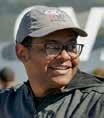
Abdalla Dafiah VIDEO TECHNICIAN
Metropolitan State University of Denver BA in Video Production (in progress)

Miami University BS in Kinesiology (in progress)

Metropolitan State University of Denver MS in Technical Communications, 2019
Lisa Franck OPERATIONS
Zach Gerber GRAPHIC DESIGNER
Forrest Pommer-Schindler
Katie Young VIDEO EDITOR
ASTEROID EDUCATION
Our Asteroid Education program increases awareness about asteroids and science through public speaking and exposure in the media. In addition to Asteroid Day, this year we shared stories about our work and why the world should learn more about asteroids. We have highlighted a few public education activities from this last year.
Rusty Schweickart SPACE.COM
B612 co-founder Rusty Schweickart discussed the multidimensional aspects of asteroids, asteroid deflection, and Apollo 9.

November
December 2019
Dr. Ed Lu “A METEOR EXPLODED OVER THE BERING SEA WITH THE ENERGY OF 10 ATOMIC BOMBS,” POPULAR SCIENCE
Popular Science interviewed Ed Lu about the meteor that exploded in early 2019 over the Bering Sea.

March
Dr. Ed Lu
DAVID RUMSEY MAP CENTER, STANFORD UNIVERSITY
Ed Lu partnered with the David Rumsey Map Center at Stanford University to present our vision to chart the high frontier of space.

Dr. Ed Lu, Featured Speaker THE LONG NOW FOUNDATION
Ed spoke to guests at the Long Now Foundation about the need for a fourdimensional map of the inner solar system.
Dr. Ed Lu
NPR’S WEEKEND EDITION
Ed Lu was featured on NPR’s Weekend Edition about the meteor that exploded over the Bering Sea.

April
Dr. Ed Lu, Danica Remy, Rusty Schweickart, and Others ASTEROID DAY LIVE!
Members of B612 and the scientific community gathered in Luxembourg for three days of programming, broadcast to millions of households, to encourage the conversation about asteroids and planetary defense.

June
August
John Carrico and Mike Loucks AGI PODCAST
Analytical Graphics Inc. (AGI) hosted Asteroid Institute Astrodynamicists John Carrico and Mike Loucks on their podcast. They discussed the Asteroid Institute’s latest research on propagating asteroid orbits and predicting the force needed to prevent an asteroid from hitting Earth and how AGI’s STK software is helping us achieve this.
Danica Remy NBC NEWS
Danica Remy highlights the need to advance asteroid discovery and create an inventory of all the asteroids near Earth.





FOUNDING CIRCLE
ANONYMOUS x 7
ANONYMOUS LEADERSHIP GIFT x 3*
Bill Anders
Geoffrey Baehr
William K. Bowes Jr. Foundation*
Brian Burton and James Mercer, Broken Bells
Don Carlson
Vinton and Sigrid Cerf
Y(Imc) Chapman
Emily and David Corrigan
Asa Denton
Esther Dyson
Alan Eustace
Sasha Galitsky
Gillikin Family


Eliot Gillum
Glaser Progress Foundation
Dane Glasgow
Steve and Julie Grimm
Garrett Gruener and Amy Slater
VK Hsu & Sons Foundation Ltd.
James D. and Justin Jameson
Margaret Jonsson Family Foundation
Steve Jurvetson*
Dominik Kaiser
Steve Krausz
Vladas Lašas
James Leszczenski
David Liddle and Ruthann Quindlen
Suzanna Mak
Greg McAdoo
Top row (left to right): Hillary Aiken, Yvonne Ellington, and John Montrym; John Kobs and Danica Remy; Dana Stalder, Rusty Schweickart, and Guests at Meteor Crater. Bottom row (left to right): Ed Lu and Erik Charlton; Paul Chodas, Mark Boslough, and Clark Chapman; Guests at the Asteroid Day Tech Briefing in Luxembourg.

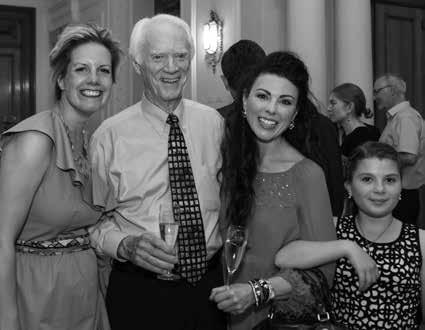
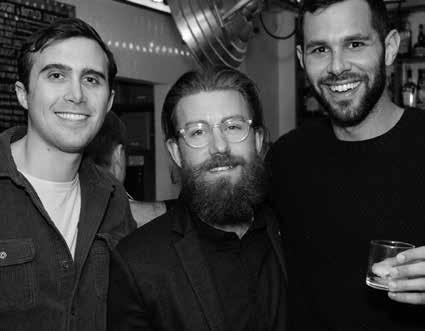
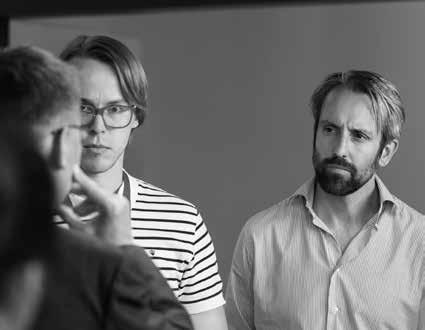
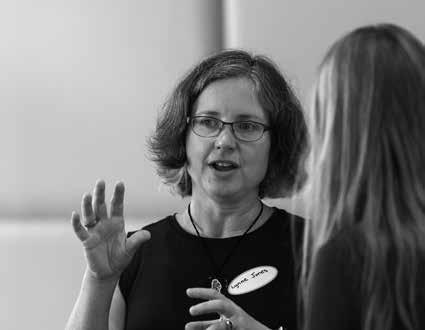
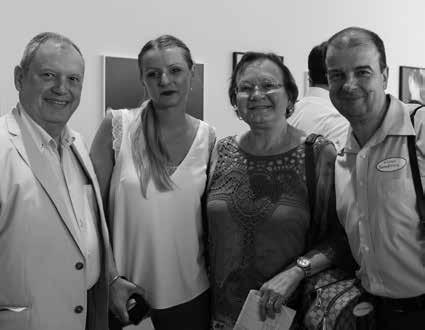
ASTEROID CIRCLE
Scott McGregor and Laurie Girand
Matt Mullenweg
Diane Murphy
Peter Norvig
Shervin Pishevar
The Peggy Rawls Family Fund
Ray Rothrock
Edwin Sahakian
Rusty Schweickart and Nancy Ramsey
Tim Trueman
Robert C. and Fallon B. Vaughn
Ben Wheeler
Yishan Wong and Kimberly Algeri-Wong
*Leadership Gift ($1 M–$5 M)
Rick Armstrong
The Barringer Crater Company
Jim Chervenak
Lynn and Anisya Fritz
Arthur Gleckler and Kristine Kelly
Jensen Huang
Tito’s Handmade Vodka
Top row (left to right): Magdalena and Xavier Thillen; Tim Dougherty, Nicholas Paul Brysiewicz, and Benjamin Grant at The Interval; Lynne Jones of the DIRAC Institute.
Bottom row (left to right): Meredith Moss, Rusty Schweickart, and Lisa Burke at the Asteroid Day Gala; Guests at the Asteroid Day Tech Briefing; Romanian Cosmonaut Dorin Prunariu, Tatiana Zamfiroiu, Crina Prunariu, and Romanian Ambassador Lilian Zamfiroiu.
We have donors from 46 countries.
DONOR HONOR ROLL
All Gifts $500–$24,999*
ANONYMOUS
Andrew Baruch
Richard Bowen
Rick Bradford
John Clendenin
John Conery
George Cornecelli
Steve Denning
Albert Ender
Ray Erikson
Joseph L. Fischer
Patrick D. Garvey
Daniel and Dean Hawes
Keith Hughes
Robert Jedicke
Glen Knowles
Aki Korhonen
Sam Lichtenstein
Scott Manley
Bob McIntosh
Ernie McNabb
Michael Meek
John Kenneth Menges Jr.
Glenn Mercer
Patrick Murphy
Drummond Pike
Dirk Pranke
Kathryn Roberts
Scott and Nola Schneider
Rolf Schreiber
James Sewell
Douglas Simpkinson
Eric Tilenius
Jan Magne Tjensvold
Varian Family Fund
James and Cynthia Walker
Sam Welsh
Magnus Wentzel
Lawrence Wilkinson
Jon Winston
Matt Wyndowe
*From September 1, 2018, to October 1, 2019
Tibet, by Ed Lu from the International Space Station
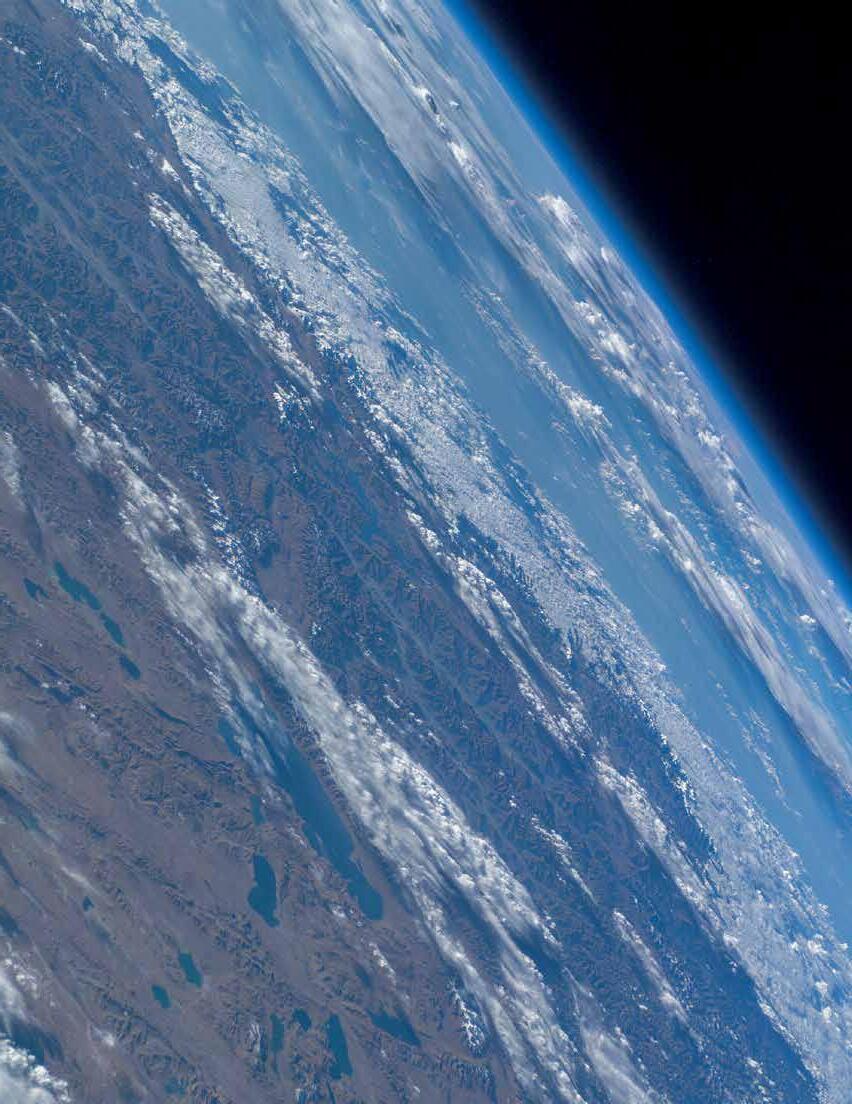
GOVERNING BOARD
Dr. David Liddle, Chair
Geoffrey Baehr
Dr. Clark Chapman
Dr. Dan Durda
Garrett Gruener
Dr. Ed Lu, Co-Founder
Danica Remy, President
Lawrence Wilkinson
ASTEROID INSTITUTE, A PROGRAM OF B612
Dr. Ed Lu, Executive Director
Dr. Marc Buie, Mission Scientist
Jonny Dyer, Spacecraft Systems Engineer
Dr. Scott Hubbard, Mission Strategist
Dr. Roger Linfield, Mission Analyst
Dr. Harold Reitsema, Mission Director
Dr. Sam Waldman, Avionic Engineer
ADAM PROJECT TEAM
John Carrico, Project Manager and Astrodynamicist
Dr. Siegfried Eggl, Researcher
Hank Grabowski, Systems Engineer and Astrodynamicist
Dr. Sarah Greenstreet, Senior Researcher
Lowell Hanson III, Astrodynamicist
Dean Hawes, Technical Program Manager
Dr. Tatiana Kichkaylo, Senior Engineer
Laura Lark, Engineer
Mike Loucks, Astrodynamicist
Joachim Moeyens, Researcher
Samira Motiwala, Astrodynamicist
Allan Posner, Systems Engineer and Astrodynamicist
Dr. Vivek Vittaldev, Mission Researcher
B612 FOUNDATION
Danica Remy, President
Hillary Aiken, Vice President
Joelle Byars
Writer & Operations — Univ. Nebraska
Daniel de Zeeuw
Data & Business Systems Manager
Diane Murphy
Vice President, PR
Alex Shwe
Operations — Univ. Wisconsin
ASTEROID DAY TEAM
Dr. Brian May, Co-Founder, United Kingdom
Danica Remy, Co-Founder, California, USA
Grig Richters, Co-Founder, Germany
Rusty Schweickart, Co-Founder, California, USA
Hillary Aiken, Gala Manager, California, USA
Max Alexander, Photographer, United Kingdom
Venelin Bochev, Operations Manager, Bulgaria
Leonie Boucheron, Production, Luxembourg
Joelle Byars, Copy & Operations, Hawaii, USA
Abdalla Dafiah, Video Technician, Colorado, USA
Daniel de Zeeuw, Data Systems, California, USA
Colleen Fiaschetti, Brand & Project Manager, Utah, USA
Lisa Franck, Production, California, USA
Zach Gerber, Graphic Design, Colorado, USA
Philippine Griveaud, Sponsors & Speakers, Luxembourg
Chris Jennings, Production, Colorado, USA
Diane Murphy, Press Relations, California, USA
Forrest Pommer-Schindler, Studio Manager, California USA
Dorin Prunariu, Asteroid Day Ambassador, Romania
Razvan-Petru Radu, Advisor, Luxembourg
Georges Schmit, Chair, Luxembourg
Katie Young, Video Editor, Colorado, USA
